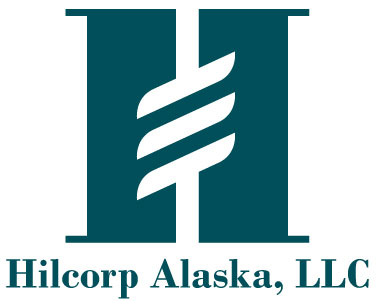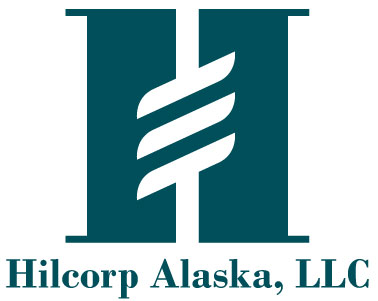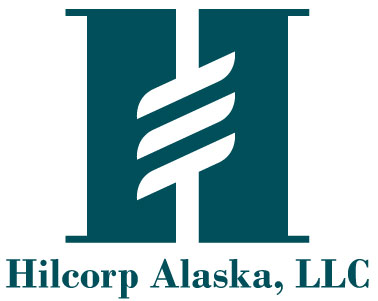Information
-
Audit TitleHAK - Facility Audit
-
Location
-
Conducted on
-
Select date
-
Prepared by
1.0 General Worksite
-
1.1 Safety signs / warnings posted where appropriate
-
1.2 Emergency telephone numbers posted where they can be found readily?
-
1.3 Emergency evacuation / traffic routes identified and posted?
-
1.4 Emergency evacuation routes are kept clear of ddebris and are easily accessible?
-
1.5 All work areas are clean and orderly?
-
1.6 Adequate toilets and washing facilities provided and kept clean and sanitary?
-
Work areas are adequately illuminated?
2.0 Fire Protection
-
2.1 Combustible scrap, debris, and waste stored safely and removed from work areas promptly?
-
2.2 Fire suppression equipment inspection is current?
-
2.3 Fire alarms have been tested and are functioning correctly?
-
2.4 Fire extinguishers are provided and readily accessible?
-
2.5 Fire extinguisher inspections are performed and current (monthly)?
3.0 Walkways / Floor Openings
-
3.1 Aisles and paths kept clean and clear?
-
3.2 Wet surfaces are covered with non-slip material or are maintained by personnel?
-
3.3 umps / Floor openings are covered or guarded?
-
3.4 Are standard guardrails provided when the walkway surface is elevated more than 30” above adjacent floor or ground?
-
3.5 Toe boards are installed around edges of permanent floor openings?
-
3.6 Grates and floor covers designed so that foot traffic / rolling equipment will not affect their placement?
4.0 Stairways / Elevated Surfaces
-
4.1 Stairs equipped with standard railings with four or more stair risers?
-
4.2 Stairways at least 22” wide?
-
4.3 Stair angles are no more than 50 degrees and no less than 30 degrees?
-
4.4 Stair risers are uniform from top to bottom and no more than 7.5” tall?
-
4.5 Steps are designed to be a slip resistant surface?
-
4.6 Handrails located between 30” and 34” of the surface of the stair treads?
-
4.7 Handrails capable of withstanding 200# of force when applied within 2” of the top rail edge?
-
4.8 Signs posted showing the surface load capacity?
-
4.9 Surfaces elevated more than 30” have standard guardrails provided?
-
4.10 Elevated surfaces that expose workers or machinery to falling objects protected with 4” toe boards?
-
4.11 Permanent means of access and egress provided to elevated work surfaces?5.0
5.0 Flammable and Combustible Storage
-
5.1 Approved containers used for the storage and handling of flammable and combustible liquids?
-
5.2 Flammable liquids kept in closed containers when no in use?
-
5.3 Flammable liquids are dispensed from bulk containers using bonding or grounding straps?
-
5.4 Flammable and combustibles are placed in approved flammable storage cabinets when not in use?
-
5.5 Flammable storage cabinets are kept closed and latching mechanisms function properly?
-
5.6 Combustible materials are not placed on the top of flammable storage cabinets?
6.0 Ladders
-
6.1 Ladders inspected and maintained in good condition?
-
6.2 Non-slip feet provided on each ladder?
-
6.3 Ladder rungs and steps free from grease and oil?
-
6.4 Ladders with missing steps or cleats, broken side rails, or faulty equipment are removed from service?
-
6.5 Extension ladders are appropriately set up extending 3 feet above the surface being accessed?
-
6.6 Ladders are clearly marked with caution signs and load limits?
-
6.7 Ladder rungs are uniformly spaced at 12” center to center?
7.0 Compressors / Compressed Air
-
7.1 Compressors are equipped with pressure relief valves and pressure gauges?
-
7.2 Compressor air intakes installed or placed appropriately to ensure only clean air uncontaminated air enters?
-
7.3 Signs posted warning employees of the automatic starting features if equipped?
-
7.4 All moving parts/belt systems are adequately guarded to prevent injury to personnel?
-
7.5 Air nozzles are designed to reduce airflow to 35psi?
-
7.6 Airlines are attached using whip checks?
-
7.7 Compressed air is not being used or directed at personnel in the area?
8.0 Compressed Gas Cylinders
-
8.1 Cylinders are legibly marked to clearly identify the gas contained?
-
8.2 Cylinders are stored in areas that are protected from external heat sources?
-
8.3 Cylinders stored in appropriate carts or racks which prevent them from tipping or falling?
-
8.4 Valve protector caps installed on cylinders when not in use?
-
8.5 Cylinders stored at least 20’ away from combustible materials?
-
8.6 Fuel gas and oxygen cylinders are stored a minimum of 20’ apart or separated by a 1-hour fire wall?
-
8.7 Cylinders are free of visible deterioration and maintained with current hydro inspection dates?
9.0 Electrical
-
9.1 Extension cords in use are in good condition and have a grounding conductor?
-
9.2 GFCIs are installed on AC circuits where construction, demolition, modifications, alterations, or excavations are performed?
-
9.3 Electrical wiring and cords are in good condition without deteriorated insulation, exposed wire, or frays?
-
9.4 Electrical cords and cables free of splices and taps?
-
9.5 Cord, cable, and raceway connections are intact and secure?
-
9.6 Disconnecting switches and service breakers are clearly labeled to indicate their use or equipment served?
-
9.7 Sufficient access and working space provided and maintained around all electrical equipment to permit safe operation and maintenance?9.8
-
9.8 Unused opening including conduit knockouts in electrical enclosures and fittings protected with appropriate covers, plugs, or plates?9.9
-
9.9 Switches, receptacles, junction boxes, etc, provided with tight fitting covers or plates?
-
9.10 Electrical equipment is clearly marked or labeled with appropriate warnings?
10.0 Hand Tools, Power Tools
-
10.1 Tools and equipment maintained in good condition?
-
10.2 Hand tools such as chisels, punches, etc. which develop mushroomed heads reconditioned or replaced?
-
10.3 Broken handles on hammers, axes and similar equipment removed from service and replaced?
-
10.4 Worn or bent wrenches are removed from service replaced?
-
10.5 Jacks inspected periodically and weight limits posted on the equipment?
-
10.6 Tools stored in dry, secure location?
-
-
10.7 Are guards installed on grinders, saws, and other similar equipment?
-
10.8 Power tools appropriately grounded with grounding pin or of the approved double insulated type?
-
10.9 Effective guards in place over belts, pulleys, chains, and sprockets?
-
10.10 Pneumatic and hydraulic hoses on power operated tools in good condition with no sign of damage or deterioration?
-
10.11 Tool rests and tongue guards appropriately adjusted on bench grinders?
-
10.12 Bench and free standing tools are appropriately secured to work benches or floors?
-
10.13 Electrical tools are connected directly to receptacle without the use of an extension cord when in permanent location?
11.0 Material Handling / Hoisting and Auxilary Equipment
-
11.1 Safe clearance for equipment through aisles and doorways?
-
11.2 Mechanized equipment inspected daily prior to use?
-
11.3 Hand trucks maintained in safe operating condition?
-
11.4 Hooks are equipped with safety latches and are in good condition?
-
11.5 All rigging and lifting equipment has been inspected annually and has been removed from service if appropriate?
-
11.6 Stacked materials are interlaced to prevent sliding or tipping?
-
11.7 Shelves and pallet racks are secured from tipping or falling?
-
11.8 Maximum load limits posted on shelving and rack systems?
-
11.9 Electrical hoists are equipped with functioning limit devices at highest and lowest point
-
11.10 Rated load of hoist is legibly marked and visible to the operator?
-
11.11 Controls for hoists are plainly marked to indicate the direction of travel or motion?
-
11.12 Hoist Inspection Certifications are maintained on site?
12.0 Machine Guarding
-
12.1 Is sufficient clearance provided around and be3tween machines to allow for safe operation?
-
12.2 Is equipment and machinery securely placed and anchored when necessary to prevent tipping?
-
12.3 Is power shut off switch in the reach of the operator’s position at the machine?
-
12.4 Are all emergency stop buttons brightly colored and or placarded?
-
12.5 Pulleys and belts within 7 feet of the floor or working level are properly guarded?
-
12.6 Chains and gears properly guarded?
-
12.7 Is the grinder effectively grounded?
-
12.8 Is cleanliness maintained within the vicinity of the grinder?
13.0 Abrasive Wheel Equipment
-
13.1 Are work rests installed and kept adjusted to within 1/8” of the wheel?
-
13.2 Is the adjustable tongue guard used and kept adjusted to within ¼” of the wheel?
-
13.3 Do side guards cover the spindle, nut, and flange, and 75% of the wheel diameter?
-
13.4 Are bench and pedestal grinders permanently mounted?
-
13.5 Are bench and pedestal grinders permanently mounted?
-
13.6 Maximum RPM consistent between abrasive wheel and grinder motor?
-
13.7 Is the grinder effectively grounded?
-
13.8 Is cleanliness maintained within the vicinity of the grinder?
14.0 Eyewash, Showers, Emergency Equipment
-
14.1 Eyewash stations are inspected monthly and maintained monthly?
-
14.2 Eyewash stations are located in areas where exposure to caustic / acid is probable?
-
14.3 Eyewash stations are sanitary and if required fluids are treated within 6 month intervals?
-
14.4 Eyewash bottles are within expiration date and kept in sanitary condition?
-
14.5 Emergency showers are inspected and tested monthly?
-
14.6 Emergency shower fluids are tepid and suitable for use in the event of an emergency?
-
14.7 Plumbed eyewash and emergency showers are not exposed to freezing temperatures?
-
14.8 Access to eyewash stations and emergency showers is clear of obstruction?
15.0 Exit Routes
-
15.1 Exit routes marked and illuminated by reliable light source?
-
15.2 All doors, passageways, or stairways that are not exits are marked as “Not an Exit”?
-
15.3 All Exit doors are clearly identified with appropriate signage of at least 5” letters?
-
15.4 All exits are free from obstruction?
-
15.5 Sufficient exits to permit prompt emergency escape?
-
15.6 Exit doors open from the inside without the use of a key, tool, or any special knowledge of user?
-
15.7 Where panic hardware is installed the hardware functions easily in the direction of exit traffic?
-
15.8 Exit doors are provided with adequate barriers if opening into streets or traffic?
16.0 Other
-
16.1 Are there any other deficiencies to note?











